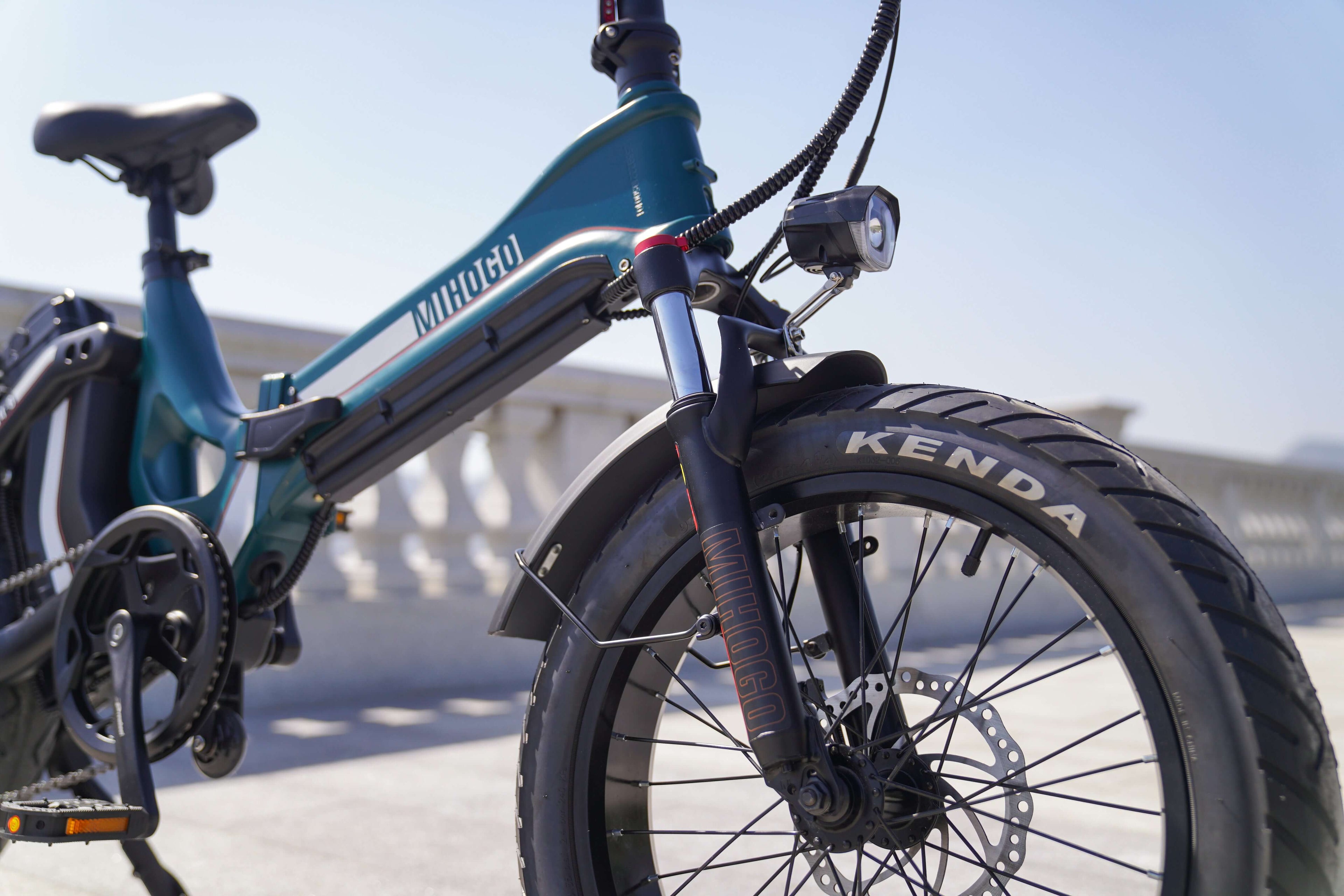Understanding Modern E-Bike Battery Technology
Lithium-Ion Dominance in Europe
Lithium-ion batteries represent 85% of the European e-bike market due to their superior energy density, lightweight construction, and extended lifespan. Modern European e-bikes typically feature battery capacities ranging from 400Wh to 800Wh, with premium models offering up to 1000Wh for extended range applications.
Key European Battery Specifications for 2025:
- Energy Capacity: 400-800Wh for standard models, 800-1000Wh for premium
- Nominal Voltage: 36V (entry-level) to 48V (performance models)
- Charge Cycles: 500-1000 cycles before 80% capacity retention
- Operating Temperature: Optimal 15-35°C for European climates
- IP Rating: Minimum IP65 for European weather conditions
Advanced Battery Management Systems (BMS)
The Battery Management System is the intelligent electronic brain embedded within your e-bike's battery pack. In 2025, European e-bikes feature sophisticated BMS technology that:
- Monitors individual cell voltage to prevent over-voltage or under-voltage conditions
- Controls current flow during charging and discharging to prevent overheating
- Balances cell charge to maximize overall battery capacity and lifespan
- Manages thermal conditions to optimize performance across European climate variations
- Provides predictive maintenance alerts for proactive battery care
Smart Charging Optimization Strategies
European Climate-Adapted Charging
Temperature-Controlled Charging Protocol: European weather patterns require specific charging adaptations for optimal battery performance. The upcoming EN 50604+A1 standard, mandatory from August 2025, ensures all e-bike batteries meet rigorous safety and performance requirements.
Optimal Charging Conditions:
- Charge at room temperature (15-20°C) for maximum efficiency
- Avoid charging below 0°C as it irreparably degrades lithium-ion cells
- Monitor charging in temperatures above 35°C to prevent thermal stress
- Use climate-controlled storage during extreme European weather conditions
Advanced Charging Techniques
Smart Charging Protocols for 2025:
The 20-80 Rule: Keep your battery charge between 20-80% for daily use to optimize cell longevity and prevent stress-induced degradation.
Strategic Full Charging: Perform complete 0-100% charging cycles once monthly to calibrate the BMS and maintain accurate charge level readings.
Post-Ride Charging: Charge immediately after rides to allow natural battery cooling while maintaining consistent charge levels for optimal performance.
Overnight Optimization: Utilize off-peak European electricity rates while allowing natural battery cooling during rest periods.
Fast Charging Considerations
European e-bikes in 2025 increasingly support rapid charging, with high-end models capable of 80% charge in under 30 minutes. However, fast charging generates additional heat and can reduce overall battery lifespan over time.
Fast Charging Best Practices:
- Reserve fast charging for emergency situations or long-distance touring
- Monitor temperature during rapid charging sessions
- Allow cooling periods between consecutive fast charging cycles
- Alternate with standard charging to maintain optimal battery health
Range Optimization Techniques
Riding Efficiency Strategies
Power Management for European Conditions:
Assistance Level Optimization:
- Eco Mode: Utilize for flat urban commuting and maximum range
- Normal Mode: Standard setting for mixed terrain and moderate assistance
- Turbo Mode: Reserve for steep climbs and challenging European mountain routes
Pedal Assistance Integration:
- Maintain consistent pedaling to reduce motor strain and extend range
- Anticipate terrain changes to optimize assistance level transitions
- Use manual gear shifting to complement electric assistance efficiently
Environmental Optimization
European Weather Adaptation:
Cold Weather Strategies:
- Pre-warm batteries in freezing conditions before rides
- Reduce assistance levels to compensate for cold-weather capacity loss
- Store batteries indoors during harsh European winters
- Consider sodium-ion batteries for superior cold-weather performance
Hot Weather Management:
- Avoid prolonged sun exposure during charging and storage
- Increase ventilation around battery compartments
- Reduce charging current in ambient temperatures above 30°C
- Plan rides during cooler European morning and evening hours
Battery Lifespan Enhancement
Cycle Life Optimization
Modern European e-bike batteries typically last 3-5 years with proper care, handling 500-1000 charge cycles before significant capacity degradation. Premium batteries using cells from Samsung, LG, and Panasonic offer superior longevity compared to budget alternatives.
Lifespan Extension Strategies:
Depth of Discharge Management:
- Never discharge below 10% to prevent deep discharge damage
- Avoid complete battery depletion during rides
- Plan charging stops for long-distance European touring
- Carry portable charging solutions for extended adventures
Storage Optimization:
- Maintain 50-60% charge for extended storage periods
- Store at room temperature (15-20°C) in dry conditions
- Check charge levels quarterly during storage periods
- Avoid basement or garage storage subject to temperature extremes
Advanced Maintenance Protocols
Professional Battery Care:
Regular Calibration: Perform monthly BMS calibration by allowing complete discharge to 10% followed by uninterrupted charging to 100%. This process helps maintain accurate charge level readings and optimal cell balancing.
Connection Maintenance:
- Inspect charging ports for corrosion or damage
- Clean battery contacts with appropriate contact cleaners
- Ensure secure connections to prevent resistance-induced heating
- Protect connectors with weatherproof covers when not in use
Firmware Updates: Many 2025 European e-bikes feature updatable BMS firmware that improves charging algorithms and battery management. Check with your dealer for available updates that can enhance battery performance.
2025 Battery Technology Innovations
Emerging European Technologies
Solid-State Battery Integration: European premium e-bike manufacturers are beginning to offer solid-state batteries that provide 50% more energy density than conventional lithium-ion while eliminating fire risks. These batteries charge to 80% capacity in under 10 minutes and offer significantly extended lifespans.
Graphene-Enhanced Batteries: Some European manufacturers now incorporate graphene hybrid batteries that can charge in just five minutes while providing enhanced thermal management and improved cycle life.
AI-Powered Optimization: Artificial intelligence systems analyze individual riding patterns, terrain data, and weather conditions to formulate optimized charging and discharging strategies, potentially extending battery life by 20-30% through intelligent power management.
Smart Grid Integration
European V2G Technology: Vehicle-to-Grid (V2G) systems are becoming available in progressive European markets, allowing e-bikes to return energy to the grid during peak demand periods while optimizing charging costs for users.
Renewable Energy Integration: Solar-powered charging solutions are increasingly popular in southern European markets, with smart charging systems that optimize battery charging using renewable energy sources and reduce electricity costs.
Battery Swapping Networks
European Infrastructure Development: ENYRING, a Yamaha-backed startup, is launching battery-swapping networks in Amsterdam and Berlin, potentially eliminating range anxiety and charging wait times for urban European riders.
Performance Monitoring and Diagnostics
Digital Battery Management
Smartphone Integration: Modern European e-bikes feature comprehensive battery monitoring through smartphone apps that provide:
- Real-time capacity monitoring and charge level tracking
- Range prediction based on current conditions and riding patterns
- Health diagnostics with cycle count and degradation tracking
- Charging optimization recommendations for maximum lifespan
- Remote monitoring for theft prevention and location tracking
Predictive Maintenance: Advanced BMS systems use machine learning to predict potential battery issues, enabling timely intervention and preventing unexpected failures during European touring adventures.
Troubleshooting Common Issues
European Climate-Related Problems:
Winter Performance Degradation: If experiencing reduced range during European winters, this is normal as lithium-ion batteries lose 10-20% capacity in cold conditions. Pre-warming batteries and using lower assistance levels can mitigate this effect.
Charging Issues: Reset the BMS by disconnecting the battery for 10-30 minutes if experiencing charging problems or sudden power loss. This allows the system to clear error codes and resume normal operation.
Capacity Loss Indicators: Monitor for signs of battery degradation including reduced range, longer charging times, or irregular charge level displays. Professional battery health assessment is recommended after 500 charge cycles.
Economic Optimization for European Riders
Cost-Effective Battery Management
Electricity Cost Optimization: European riders can significantly reduce charging costs by utilizing time-of-use electricity tariffs, with off-peak charging potentially saving 30-50% on energy costs.
Battery Replacement Planning: In 2025, European e-bike battery replacement costs typically range from €350 to €1,200, depending on capacity and technology. Planning replacement timing can help budget for this inevitable expense.
Government Incentives: Many European countries offer subsidies and tax incentives for e-bike purchases and maintenance. Check local programs that may offset battery replacement costs or support sustainable transportation initiatives.
Insurance and Warranty Considerations
Extended Warranty Options: Consider extended warranty coverage for premium batteries, as replacement costs can represent 25-40% of the original e-bike value.
Insurance Coverage: Verify that homeowner's or renter's insurance covers e-bike battery theft or damage, as these components are increasingly targeted by thieves due to their high value.
Regional Considerations for European Markets
Northern European Adaptations
Scandinavian Winter Protocols: Nordic riders require specialized battery management for extreme cold conditions, including heated storage solutions and sodium-ion battery alternatives that perform better in sub-zero temperatures.
Extended Darkness Cycling: Longer winter nights in northern Europe require additional battery capacity for lighting systems, necessitating larger battery packs or range extender solutions.
Southern European Optimization
Mediterranean Heat Management: Southern European riders must prioritize thermal management, using insulated battery covers and avoiding midday charging during summer months to prevent heat-induced degradation.
Mountain Terrain Adaptation: Alpine and Pyrenean riders benefit from high-capacity batteries and regenerative braking systems to handle steep terrain efficiently while extending range.
Urban vs. Rural Considerations
City Commuting Optimization: Urban European riders can optimize battery life through strategic charging at workplaces and utilizing regenerative braking systems in stop-and-go traffic conditions.
Rural Touring Requirements: Countryside riders require larger battery capacities and portable charging solutions for extended adventures between charging infrastructure points.
Future-Proofing Your E-Bike Battery Investment
Technology Upgrade Pathways
Modular Battery Systems: Some European manufacturers now offer modular battery designs that allow capacity upgrades or technology replacements without purchasing an entirely new e-bike.
Compatibility Standards: The EU's mandate for standardized charging ports is pushing manufacturers toward universal compatibility, potentially allowing battery upgrades across different e-bike brands.
Environmental Sustainability
Battery Recycling Programs: European regulations require comprehensive battery recycling programs. Participate in manufacturer take-back programs to ensure responsible disposal and resource recovery.
Second-Life Applications: Degraded e-bike batteries can often serve second-life applications in home energy storage systems, extending their useful life beyond cycling applications.
Implementation Guide for European Riders
Week 1: Assessment and Baseline
- Document current battery performance including range and charging times
- Install manufacturer apps for comprehensive monitoring
- Establish optimal charging location with temperature control
- Review warranty documentation and registration requirements
Week 2: Charging Optimization
- Implement 20-80% charging protocol for daily use
- Schedule monthly calibration cycles for BMS maintenance
- Optimize charging times to utilize off-peak electricity rates
- Monitor temperature conditions during charging sessions
Week 3: Range Enhancement
- Experiment with assistance levels to find optimal efficiency
- Plan routes considering terrain and weather conditions
- Practice regenerative braking techniques where available
- Test portable charging solutions for extended adventures
Week 4: Long-term Strategy
- Establish maintenance schedule for quarterly inspections
- Plan upgrade timeline for future battery replacement
- Document performance improvements from optimization strategies
- Join European e-bike communities for ongoing support and advice
Conclusion
Battery optimization represents the key to unlocking your e-bike's full potential in the rapidly evolving European market of 2025. Through intelligent charging protocols, climate-adapted care strategies, and cutting-edge battery management technologies, European riders can achieve 20-30% longer battery life while maximizing range and performance.
The convergence of AI-powered optimization, smart grid integration, and advanced lithium-ion chemistries creates unprecedented opportunities for sustainable urban mobility. Whether commuting through Amsterdam's bike lanes, touring the Alps, or navigating London's congested streets, proper battery optimization ensures your e-bike delivers reliable, efficient performance for years to come.
As European battery technology continues advancing with solid-state innovations, renewable energy integration, and swappable battery networks, the foundation of proper battery care established today will maximize the value of future upgrades and ensure seamless compatibility with emerging infrastructure.
Remember that battery optimization is an ongoing process that adapts to changing weather, riding patterns, and technology advances. Stay informed about manufacturer updates, participate in recycling programs, and embrace the sustainable transportation revolution that's transforming European mobility.
External Reference Links:






